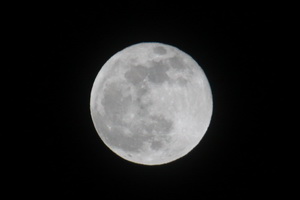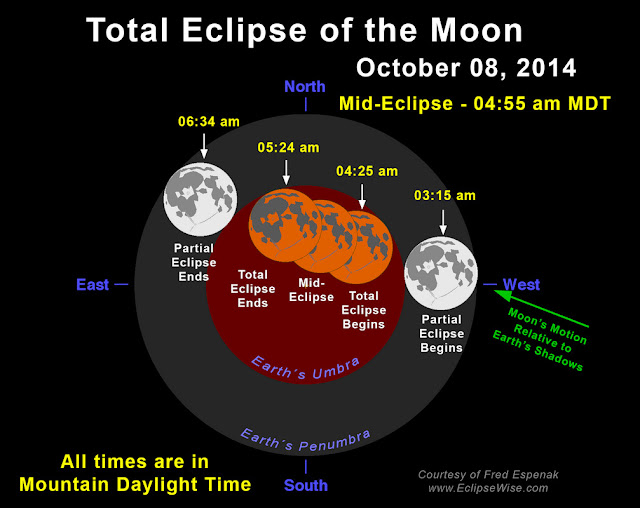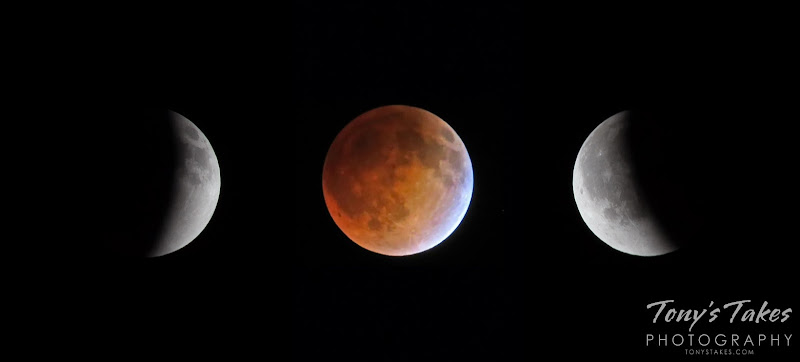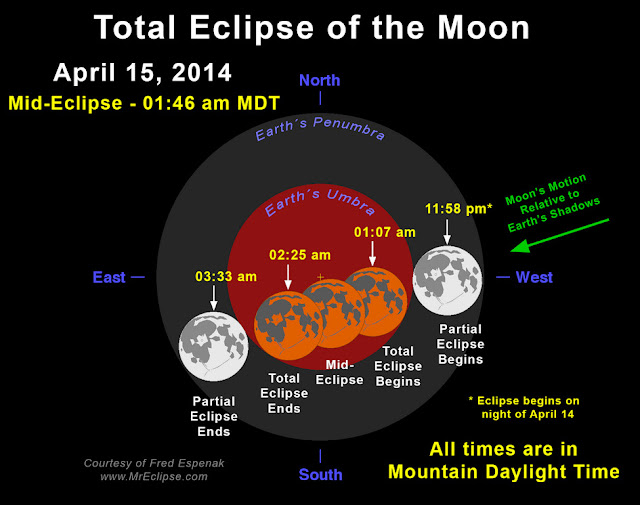|
Tag Archives: moon
2015 brings first Christmas full moon in 38 years
 Christmas 2015 will feature the holiday’s first full moon in 38 years and December 25 won’t see another for 19 more years. The last Christmas full moon occurred in 1977, the next won’t come until 2034.
Christmas 2015 will feature the holiday’s first full moon in 38 years and December 25 won’t see another for 19 more years. The last Christmas full moon occurred in 1977, the next won’t come until 2034.
The Full Cold Moon, as December’s full moon is called, will occur at 4:11am MST early Christmas morning.
According to the Old Farmer’s Almanac, “This is the month when the winter cold fastens its grip and the nights become long and dark. This full Moon is also called the Long Nights Moon by some Native American tribes.”
- Stay up to date with Thornton’s weather: Be sure to ‘like’ us on Facebook, follow us on Twitter and add us to your Google+ circles.
Shedding light on the rare Sept. 27 supermoon eclipse
|
Ashley Morrow, NASA Goddard Space Flight Center Coming soon for the first time in more than 30 years: you’ll be able to witness a supermoon in combination with a lunar eclipse. Late on Sept. 27, 2015, in the U.S. and much of the world, a total lunar eclipse will mask the moon’s larger-than-life face for more… Continue reading Shedding light on the rare Sept. 27 supermoon eclipse |
Lunar eclipse to bring ‘blood moon’ for second time of year

For the second time of the year, sky gazers will have the opportunity to witness a total lunar eclipse. This is in fact the second in a series of four consecutive total lunar eclipses, an event called the lunar tetrad.
Colorado and the rest of the western United States will have a front row seat to the celestial event occurring on the morning of Wednesday, October 8.
When and where to watch?
The partial eclipse begins at 3:15am MDT with totality starting at 4:25am. The moon will then be completely eclipsed for approximately one hour with mid-eclipse at 4:55am. The waning partial eclipse will end at 6:34am.
Anyone in the area with a clear view of the western sky should have no problem viewing the event.
When the event begins the moon will be about 40 degrees above the horizon. It will be sinking closer to the horizon as the eclipse progresses. At mid-eclipse, the moon will be 25 degrees above the horizon. When the moon emerges from the shadow of the Earth, it will barely be visible to the west as it sets.
Will Mother Nature cooperate?
Current models do indicate there will be some overnight cloudiness lasting into tomorrow morning as we see an increase in atmospheric moisture. Grids indicate 40% sky cover for the time period near mid-eclipse. The timing and location of those clouds may limit viewing a bit. The good thing is that we are expecting a mild night with temperatures right around 50 degrees in Thornton during the event. Click here to view the hour-by-hour point forecast for the latest.
What is the ‘blood moon’ and tetrad?

During totality, the moon will be rendered orange / red as the Earth’s shadow envelops the moon. Many are calling this a ‘blood moon’ but the meaning behind that term isn’t exactly clear.
As written on EarthSky.org, some attribute it to the lunar tetrad – four successive full lunar eclipses without any partial eclipses. Tomorrow morning’s eclipse is the second in the lunar tetrad with each full lunar eclipse coming six months apart.
The blood moon as it pertains to these eclipses should not be confused with the October full moon which is also referred to as a blood moon in folklore.
For more information:
Total lunar eclipse to bring ‘blood moon’ on Tax Day

For those willing to forgo a bit of sleep tonight, a gaze skyward will provide a look at the first lunar eclipse of 2014.
The entire celestial event will be visible from Colorado beginning at 11:58 pm tonight as the partial eclipse begins. Totality occurs at 1:07 am MDT on the morning of April 15 and lasting until 2:25 am. The event will be over at 3:33 am.
Current weather forecasts for Thornton and the Denver metro area show that we should have mostly clear skies tonight allowing prime viewing of the event. It will however be quite cold with temperatures in the mid to upper 20s. Check our 48 hour point forecast for what to expect.
During totality, the moon will be rendered orange / red as the Earth’s shadow envelops the moon. Many are calling this a ‘blood moon’ but the meaning behind that term isn’t exactly clear.
As written on EarthSky.org, some attribute it to the lunar tetrad – four successive full lunar eclipses without any partial eclipses. Tonight’s eclipse begins the lunar tetrad with each full lunar eclipse coming six months apart.
The blood moon as it pertains to these eclipses should not be confused with the October full moon which is also referred to as a blood moon in folklore.
Also note that Mars is at its closest point to Earth in 6 years. The red planet will be visible at about the 2:00 position in relation to the fully eclipsed moon.
For more information:
NASA releases video recreating iconic Apollo 8 Earthrise image

It was Christmas Eve in 1968 when three brave astronauts, the first humans to leave Earth orbit, circled the moon. As the 45th anniversary of that event approaches, NASA has released a video that recreates the iconic Earthrise image that has captivated the world since.
Using imagery obtained from its Lunar Reconnaissance Orbiter, the video released by NASA yesterday allows viewers to see Earthrise as it was first witnessed 45 years ago.
Audio from the Apollo 8 mission provides commentary from the astronauts as they conducted routine observations – until the spacecraft oriented itself to allow them view the planet. The astronauts then scramble to get cameras in place to capture the event.
Read the rest of this story and check out the amazing video on Examiner.com
Hunter’s Moon brightens the early morning sky
Sunday morning the virtually full moon brightened the landscape. Captured just before dawn, the image below is technically two days late to be one of the truly full Hunter’s moon but it still appears fully lit.
The Hunter’s Moon is the traditional term for the second full moon of autumn, following the Harvest Moon, the first of the season. Typically this makes it the full moon we see in October but it can sometimes fall in November.
The name is popularly attributed to Native Americans and said to be named such because it meant it was time to go hunting and prepare for the arrival of winter.
More than folklore, there is something unique about the Hunter’s Moon. See below the image for more details.
But the Hunter’s Moon is also more than just a name. Nature is particularly cooperative around the time of the autumn equinox to make the full moonrises unique around this time.
Here’s what happens. On average, the moon rises about 50 minutes later each day. But when a full moon happens close to the autumnal equinox – either a Harvest or a Hunter’s Moon – the moon (at mid-temperate latitudes) rises only about 30 to 35 minutes later daily for several days before and after the full moon.
Why? The reason is that the ecliptic – or the moon’s orbital path – makes a narrow angle with the evening horizon around the time of the autumn equinox. The narrow angle of the ecliptic results in a shorter-than-usual rising time between successive moonrises around the full Hunter’s Moon.
These early evening moonrises are what make every Hunter’s Moon special. Every full moon rises around sunset. After the full Hunter’s Moon, you’ll see the moon ascending in the east relatively soon after sunset for a few days in a row at northerly latitudes.
Gorgeous Colorado sunrise follows early morning crescent moon (Photos)
One of the benefits of being early risers like we are is that we oftentimes get to see what many others sleep through. Those that had their eyes closed just before the sunrise and as it came up, missed quite a show. Here are a few shots we took this morning.
[pe2-image src=”http://lh4.ggpht.com/-Li1oR3QnB5M/Ukh9XPB3CJI/AAAAAAAAAvU/sc3NElEWgcM/s144-c-o/twe1.jpg” href=”https://picasaweb.google.com/108306177534978229224/09292013MoonAndSunrise#5929126747558054034″ caption=”A pre-dawn crescent moon started the morning’s show. (ThorntonWeather.com)” type=”image” alt=”twe1.jpg” pe2_single_image_size=”w580″ pe2_img_align=”none” ] [pe2-image src=”http://lh5.ggpht.com/-6addX2X_SQA/Ukh9XOH4_3I/AAAAAAAAAvM/FQIPjtF-0qI/s144-c-o/twe3.jpg” href=”https://picasaweb.google.com/108306177534978229224/09292013MoonAndSunrise#5929126747314913138″ caption=”Old Glory and a gorgeous Colorado sunrise – it doesn’t get much better than that. (ThorntonWeather.com)” type=”image” alt=”twe3.jpg” pe2_single_image_size=”w580″ pe2_img_align=”none” ] [pe2-image src=”http://lh3.ggpht.com/-P0xuLDep-Lc/Ukh9XMaqy7I/AAAAAAAAAvQ/D3uQw9rSZmc/s144-c-o/twe2.jpg” href=”https://picasaweb.google.com/108306177534978229224/09292013MoonAndSunrise#5929126746856803250″ caption=”The sky was bathed in orange and blue at the start of the day. (ThorntonWeather.com)” type=”image” alt=”twe2.jpg” pe2_single_video_size=”w400″ pe2_gal_align=”none” pe2_img_align=”none” ]
Remembering a national hero: NASA releases Neil Armstrong tribute video

There are few Americans who don’t know the name ‘Neil Armstrong’ and can’t cite the tremendous contribution the man made to exploration and our nation. Following his passing last week, a memorial service was held today at the Washington National Cathedral and a new video tells much about the man.
On July 16, 1969, Neil Armstrong, Buzz Aldrin and Michael Collins took to the skies aboard their massive Saturn V rocket bound for the moon. Five days later, Armstrong and Aldrin would lift the spirits of the nation and the imaginations of the world as they became the first men to walk on the moon.
Chosen because he was a civilian at the time, Armstrong would make that infamous ‘small step for [a] man, one giant leap for mankind’. In doing so, the United States Navy veteran would forever be mentioned in the history books with the likes of Columbus, Polo, Lewis & Clark, Cook and Hillary.
We mourn the loss of this national hero but thank the Lord for a man who gave so much to his country. As we wrote last week, “May he rest in peace and may one day our nation find the will to continue on the path which he and so many of his predecessors put us on.”
Rest in peace, Neil.
Image of the Day: Earth’s atmosphere and moon
NASA’s Earth Observatory releases some of the most stunning views of the planet taken by satellites and astronauts. It’s ‘Image of the Day’ today is a stunning one showing the Earth’s atmosphere with a crescent moon hovering above.
Taken by astronauts aboard the International Space Station (ISS) on July 31, 2011, the image clearly shows the layers of our life giving atmosphere. The moon appears extraordinarily close thanks to the camera’s perspective.

From NASA:
The limb of the Earth is a work of awesome beauty and a gift to science. When observed from space, the palette of gaseous layers of atmosphere reminds us of the fragility and tenuousness of the cocoon that shelters life from cold, harsh space. That same view also allows scientists to detect the gases and particles that make up our the different layers of our atmosphere. Astronauts aboard the International Space Station captured a bit of both in this digital photograph from July 31, 2011. They threw in the Moon as an extra gift.
Closest to Earth’s surface, the orange-red glow reveals Earth’s troposphere—the lowest, densest layer of the atmosphere, and the one we live within. A brown transitional layer is the upper edge of the troposphere, known as the tropopause. A milky white and gray layer sits above that, likely a slice of the stratosphere with perhaps some noctilucent clouds thrown in. The upper reaches of the atmosphere—the mesosphere, thermosphere, and exosphere—fade from shades of blue to the blackness of space.
The different colors occur because the dominant gases and particles in each layer act like prisms filtering out certain colors of light. Instruments carried on satellites and on craft such as the space shuttle have allowed scientists to decipher characteristics of the ozone layer and the climate-altering effects of aerosols.
A thin crescent of the Moon is illuminated by the Sun below the horizon of the Earth. Though the Moon is more than 384,400 kilometers (238,855 miles) away, the perspective from the camera makes it appear to be a part of our atmosphere.
Astronaut photograph ISS028-E-020072 was acquired on July 31, 2011, with a Nikon D3S digital camera using a 400 mm lens, and is provided by the ISS Crew Earth Observations experiment and Image Science & Analysis Laboratory, Johnson Space Center. The image was taken by the Expedition 28 crew. The image has been cropped and enhanced to improve contrast. Lens artifacts have been removed. The International Space Station Program supports the laboratory as part of the ISS National Lab to help astronauts take pictures of Earth that will be of the greatest value to scientists and the public, and to make those images freely available on the Internet. Additional images taken by astronauts and cosmonauts can be viewed at the NASA/JSC Gateway to Astronaut Photography of Earth. Caption by Mike Carlowicz.
